Things are heating up for these high-demand categories
1. Hot coffee is steaming ahead in convenience
2. 64% of drinks consumed on-the-go at breakfast time are hot or cold coffees
3. A pizza offer could help c-stores take a bigger slice of food to go
4. 90% of consumers would be encouraged to buy a sweet pastry and drink on promotion
5. Hot food deliveries can provide consumers with a cheap alternative to takeaways
6. RTD coffee sales are up by more than a third
7. Even in a recession, bakery consumers will still pay more for indulgence
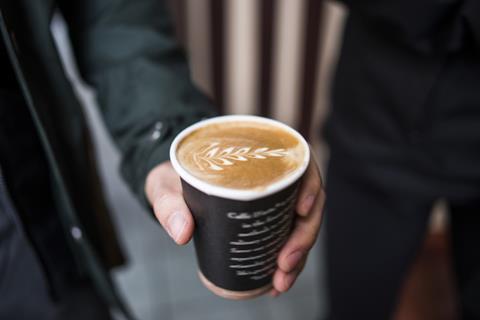
1. Hot coffee is steaming ahead in convenience
The cost of a cup of Joe, just like everything else right now, is surging. Research carried out by coffee supplier UCC in July 2022 found that prices in high street coffee shops had risen by as much as 22% year-on-year.
“Huge increases at Costa Coffee send prices rocketing to £6.15 a cup,” frothed a headline in The Sun that month, although it’s worth noting that the price quoted was for a large speciality cappuccino. The price of a small cappuccino was still up by 35p (11%) to £3.50, reported the paper.
All this is helping hot coffee sales in convenience build up a good head of steam, say retailers. “We have two Costa Coffee machines in our store and sales through them grew by 13% in the first half of 2022 compared to the previous six months,” says Craig Crossey-Truesdale, who runs a Spar outlet in Newry, County Down.
“We had very strong sales of hot coffee during lockdown because the Costa Coffee outlets in town were closed but we are shocked that sales have continued to grow now that everything is fully open again. Many people come in on their way to work in the morning and pick up a hot coffee and then buy another on their way home in the afternoon.”
Over in Bexley Park, Kent, hot coffee sales are also perky. “We are selling between 40 to 50 cups a day and if it carries on growing at the current rate, I can see us selling more than that as the weather gets colder,” says Londis retailer Nishi Patel, who has recently installed a new Tchibo Smokin’ Bean machine at his store.
“The new machine is great. Customers say the coffee tastes better and it’s hotter and creamier compared to the old Tchibo machine I had. I did look into getting a new Starbucks machine but they only wanted to deal with big corporates. I also looked at the Pret machine but it was too expensive to make a decent enough profit on. Tchibo is working well for me.”

2. 64% of drinks consumed on-the-go at breakfast time are hot or cold coffees
It will come as no surprise that most coffee is drunk in the morning. Indeed, 64% of drinks consumed on-the-go at breakfast time are hot or cold coffees, compared to 44% consumed throughout the day [Lumina Intelligence]. Shoppers coming in for coffee in the morning present retailers with an opportunity to provide hot breakfast to go too.
“We come in at 3:30 every morning and start cooking and breakfast opens up at 4:30 and runs until 10:00,” says Craig in Newry. “We sell about a third of our coffee at breakfast and do a good trade in muffins, filled croissants and sausage rolls. Our bestseller at breakfast is the Big Eat Breakfast Bap - two sausages, two rashers of bacon and a hash brown in a bap.”
Sweet pastries are another must-stock breakfast item. “Croissants remain a top sweet bakery breakfast item, accounting for 15% of all breakfast occasions eaten out of home,” says Lantmännen Unibake marketing manager Samantha Winsor, citing Lumina Intelligence research from June 2020.
“Quality is key - 44% of croissant buyers select this as a reason for their choice of establishment. Outlets should stock high-grade products made using real butter, with a light, open texture. Sweet bakery remains as important as ever as an on-the-go snack. Bakery ranks above chocolate and crisps in this sector when it comes to share of occasions.”
She adds: “The bakery and sweet treats category continues to be successful. Total bakery is in 1.2% growth over the past year [Priya]. Brunch, lunch and snacks have increased share of bakery occasions, which highlights a clear consumer demand for quick, convenient and affordable sweet solutions when they are out and about.”
ADVERTISEMENT
Tap Into the Chilled Coffee Opportunity
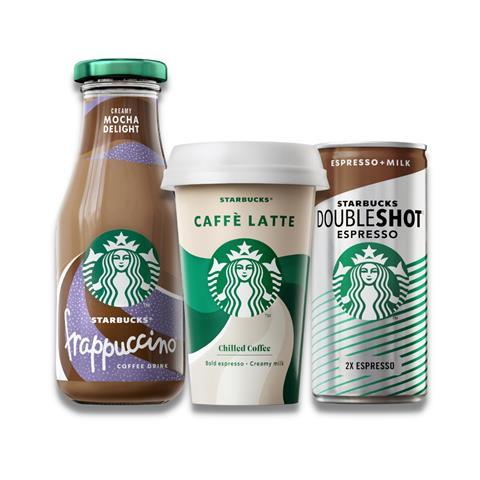
Products that meet several consumer needs in one go have become popular must-stock items for retailers. Meeting the needs of an energy boost, indulgence, hydration and satiety in one hit, the ready-to-drink (RTD) coffee sub-category has been one of retail’s most recent success stories. Making category leader, Starbucks®, an absolute must in cold drinks fridges.
Starbucks® suggests stocking a variety of SKUs that allow retailers to target a range of different shopper needs and demographics and recommends including the below in any RTD coffee line-up:
Doubleshot
· Starbucks Doubleshot® Espresso (RRP £1.90)
Chilled Classics
· Starbucks® Chilled Classics Caffè Latte (RRP £2.00)
· Starbucks® Chilled Classics Skinny Latte Lactose Free (RRP £2.00)
· Starbucks® Chilled Classics Caramel Macchiato (RRP £2.00)
Frappuccino
· Starbucks Frappuccino® Caramel chilled coffee (RRP £2.10)
· Starbucks Frappuccino® Mocha chilled coffee (RRP £2.10)
Plant Based Chilled Classics:
· Starbucks® Oat Based Vanilla Macchiato (RRP £1.70)

3. A pizza offer could help c-stores take a bigger slice of food to go
It’s not just breakfast, of course. With many consumers cutting back on eating lunch out in restaurants and coffee shops, the lunchtime trade is offering a lucrative opportunity for retailers that can get their hot food offerings right.
In Bexley Park, Nishi is winning, ahem… a ‘pizza the action’ with a new hot offering. “We’ve recently started doing pizzas, which is a new thing for us that is doing very well indeed,” he says. “We make them on frozen bases with a range of toppings and sell them hot for £4.99 for a half pizza. It’s a great margin for us and a filling lunch for our customers.”
Lunchtime trade looks set to grow for retailers like Nishi. “With the focus likely to be on value for at least the next 18 months, retailers are in a strong position,” says Phil Carratt, head of marketing & strategy at Country Choice, citing IGD analysis.
“If they can get their price, offer, and format right, by 2027 retailers could more than regain share lost to foodservice operators during the pandemic to claim 23.7% of the food-to-go market (in 2019 that stood at 22.9% and in 2020/21 it was 20%).”
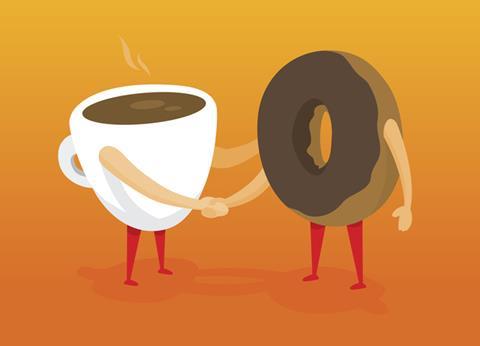
4. 90% of consumers would be encouraged to buy a sweet pastry and drink on promotion
Promotions play a key role in driving sales, adds Carratt: “Meal deals are a real asset to retailers but increasing ingredient costs will necessitate creative thinking when it comes to innovation and range extension,” he says. “As a result, the price point, range, and execution of meal deals will become fiercely competitive.”
The same applies to hot coffee and sweet bakery items, adds Winsor. “Pairing a sweet pastry with a drink is more likely to encourage 87.6% of consumers to make a purchase,” she says, citing recent research carried out by Lantmännen Unibake’s Schulstad Bakery Solutions. “With 71.6% of consumers considering the flavours that go well together when making a sweet pastry and drink purchase, it is important to have the right choices available.”
The firm advises retailers to clearly promote their pairings with point of sale and offer individually wrapped sweet pastries at the till for a perfect grab & go solution.
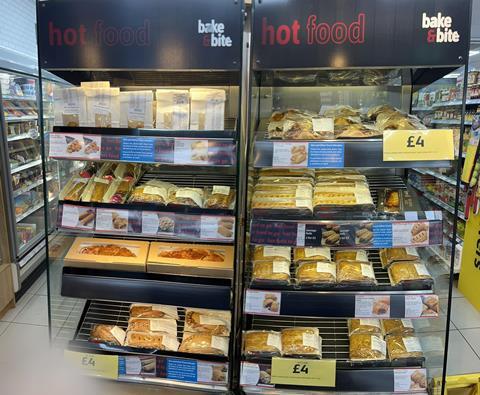
5. Hot food deliveries can provide consumers with a cheap alternative to takeaways
With many consumers drawing in their belts and cutting back on traditional takeaways, a new opportunity is opening up for retailers. “Our hot food items are doing very well on Snappy Shopper, which we have recently signed up with,” says Nishi at Bexley Park.
“Snappy Shopper doesn’t charge shoppers the commission they’d pay on apps like Uber Eats or Deliveroo and shoppers pay the same price for items they’d pay in store. We employ our own riders and pay Snappy Shopper a percentage of sales. Bundles of steak bakes and burgers with curly fries are doing very well. We’re targeting sales of £8,000 a week.”
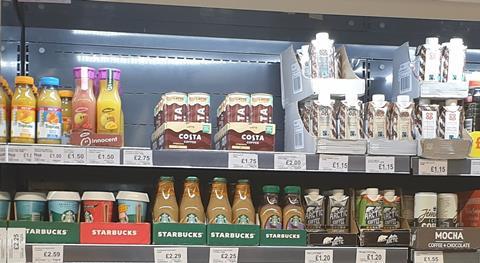
6. RTD coffee sales are up by more than a third
It’s not just hot coffee that’s taking off in convenience, of course. “Cold coffee drinks are growing at 34% year-on-year in the UK and aren’t showing any signs of slowing down [IRI 52 w/e 1 January 2022],” says Dan Chesbrough, sales director at FrieslandCampina, which launched the Barista Coffee Co range of RTDs into convenience back in 2019.
“Sales of RTD coffee reached £213m in the UK in 2021, partly driven by an increase in chilled options available from coffee shops. Consumers are now much more aware of cold coffee and stocking a variety of RTD coffees is a must for convenience stores, especially those near transport hubs.”
The big coffee shop brands are battling it out in RTDs, just as they are in hot coffee. “As the category leader, Starbucks chilled coffee has played a fundamental role in spearheading total category growth,” says Adam Hacking, head of beverages at Arla, which manufactures the Starbucks RTD range under licence.
“Starbucks has added more than £28m in incremental growth over the last year alone [NielsenIQ 52 w/e 26 March 2022]. Now worth £110m, Starbucks is one of the wider soft drinks category’s most successful brands. This means that not only has it earned its place in all soft drinks fixtures, but also that consumers expect to see it.”
Costa isn’t letting Starbucks have things all its own way, however. “Up in value by 72.9%, the Costa Coffee RTD range is now growing at almost three times the rate of the wider RTD coffee segment [NielsenIQ 18 October 2022],” says Amy Burgess, senior trade communications manager at the distributor of Costa RTDs, Coca-Cola Europacific Partners.
“Our ‘coffee-first’ proposition – whereby the RTD range uses the same coffee beans as Costa Coffee shops, with less milk content than most other brands – has proven a hit with coffee lovers, and underpins a range that is 100% HFSS-compliant. The success of the range can be put down to the widespread popularity of Costa Coffee, the nation’s favourite coffee shop for the last 12 years, and the quality of what’s inside the can.”
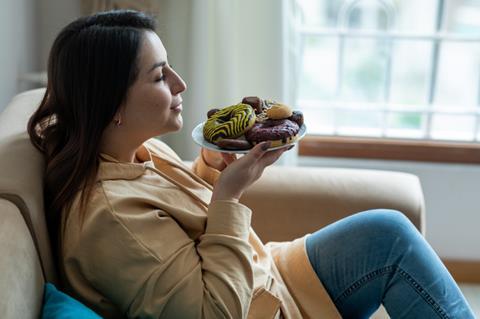
7. Even in a recession, bakery consumers will still pay more for indulgence
With the economic outlook continuing to darken, the challenges as well as opportunities that retailers are facing continue to multiply. John Want, sales & marketing director at bakery supplier Rich’s, says that the average price of baked goods has increased by 26% over the past year [Rich’s research, bakery category, March 2022].
“Inflation is not going away,” he says. “We’re seeing a reset of pricing that will have lasting and permanent effects. This has allowed certain operators to review ranges, offers and pricing hierarchy – with many focusing on those key bestsellers that they know will encourage repeat sales.”
Want expects this to drive greater demand for value propositions and trading down in terms of outlet choice. “Our insights show that consumers are happy to pay more for an indulgent treat, which is still seen as a permissible and affordable item,” he continues.
“Reducing or compromising quality to hit a price point in light of inflation is not necessarily what shoppers are looking for – they will pay more for the right indulgence. Looking ahead, out-of-home and convenience retailers need to be ready to meet all price points and indulgence requirements.”




















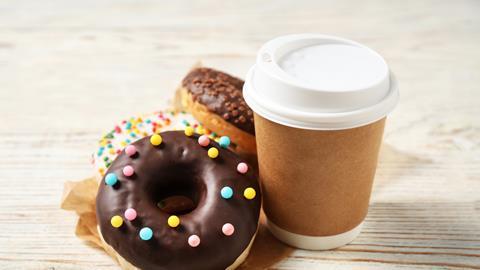
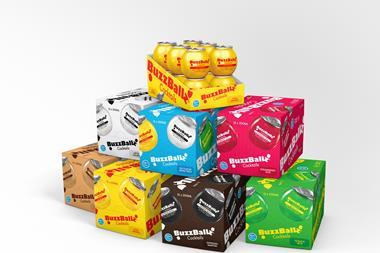

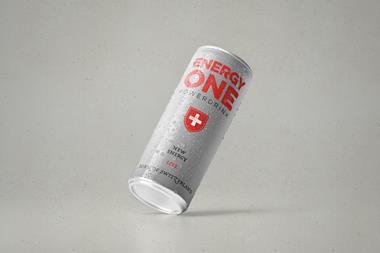
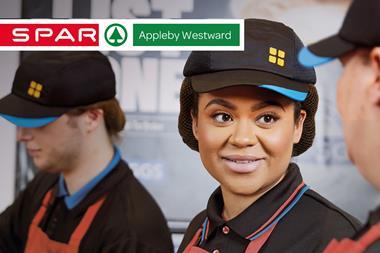



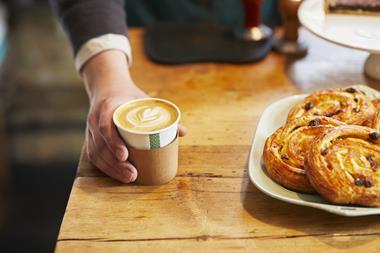




No comments yet